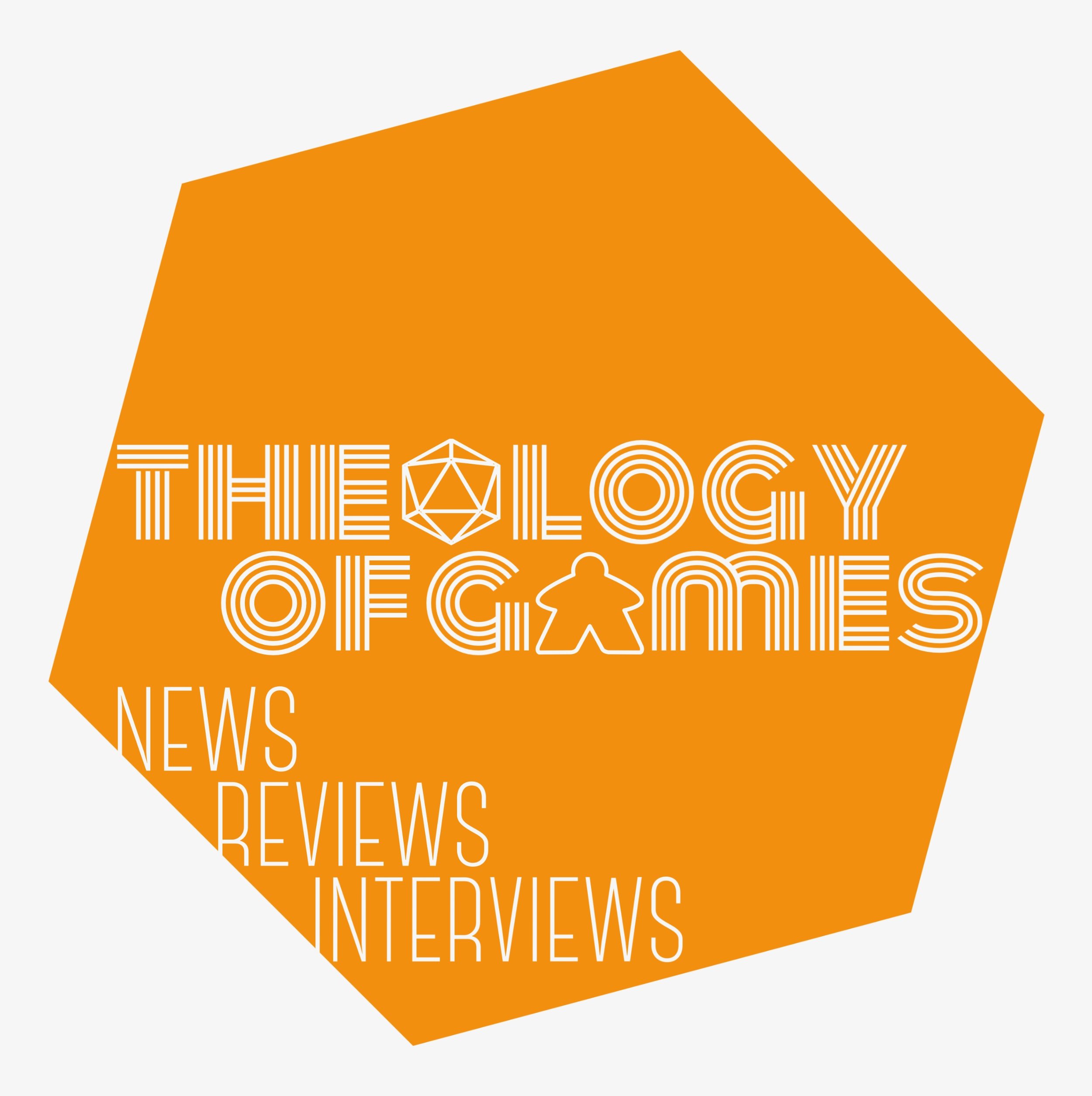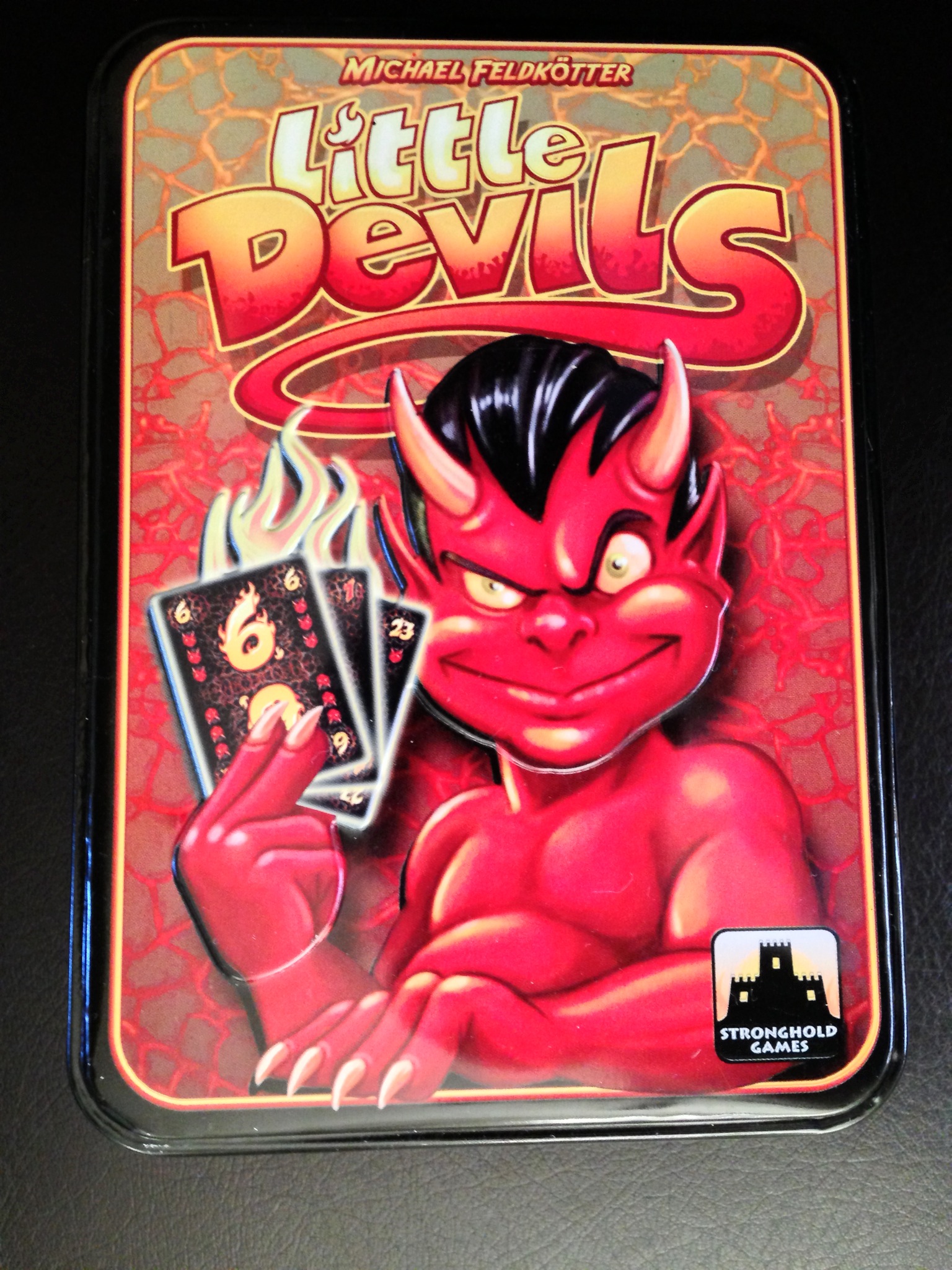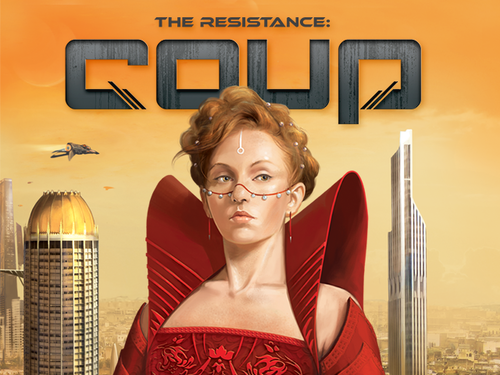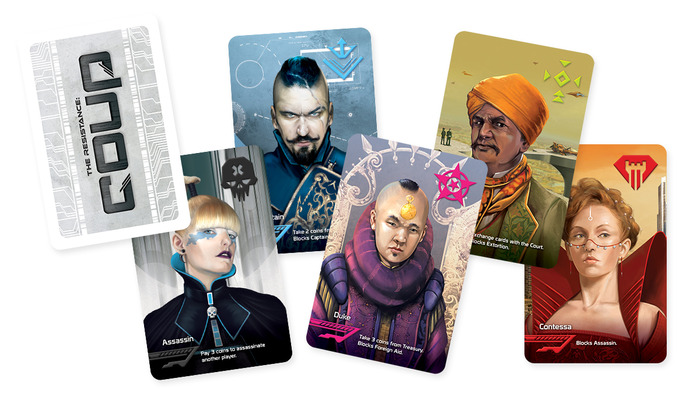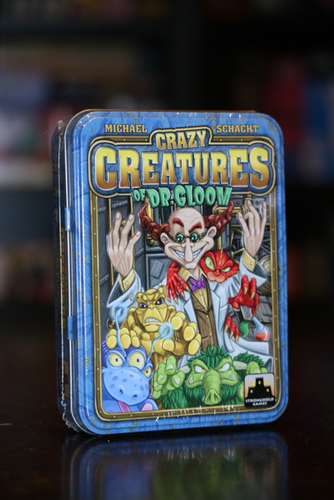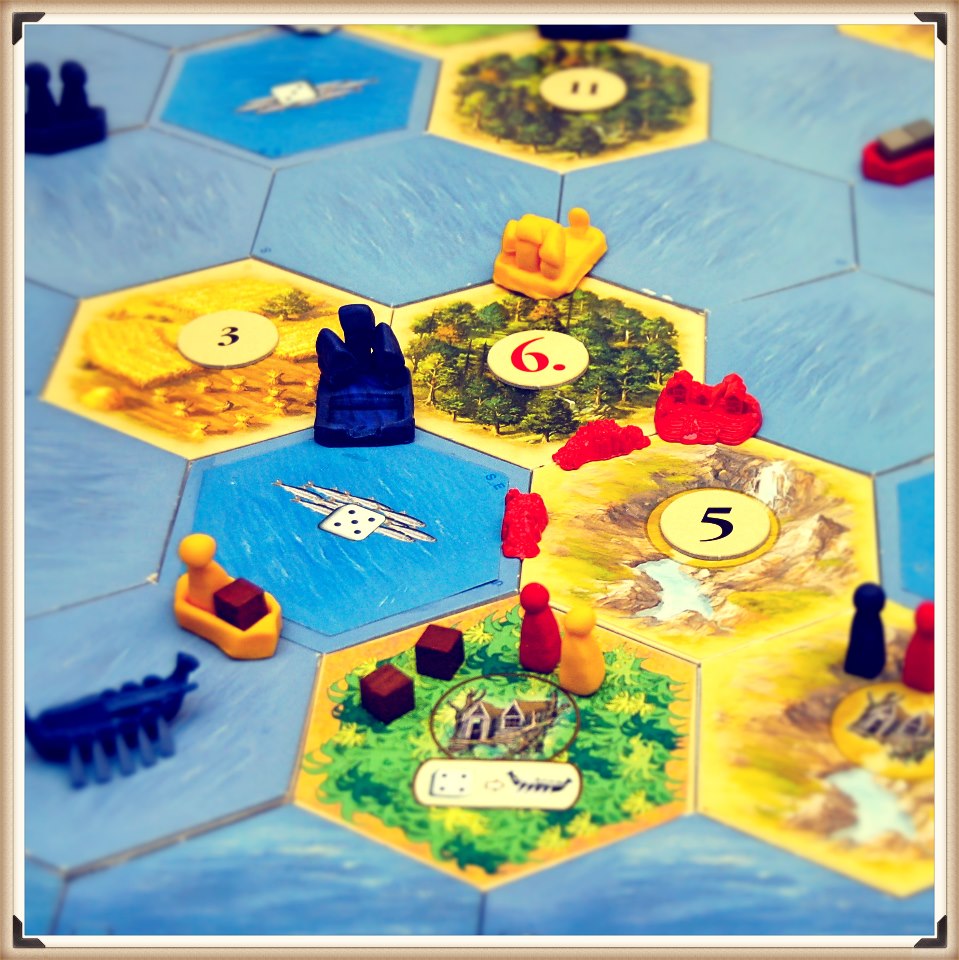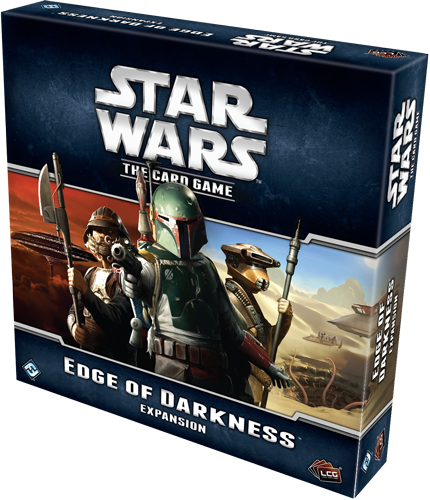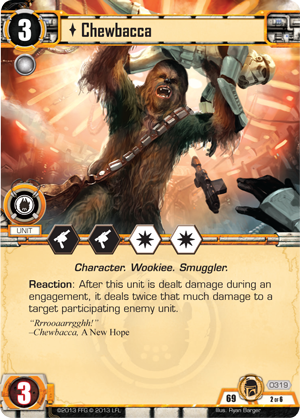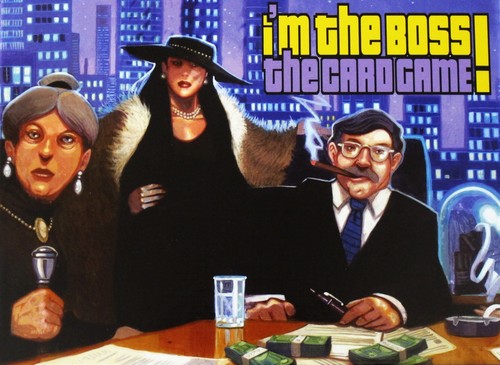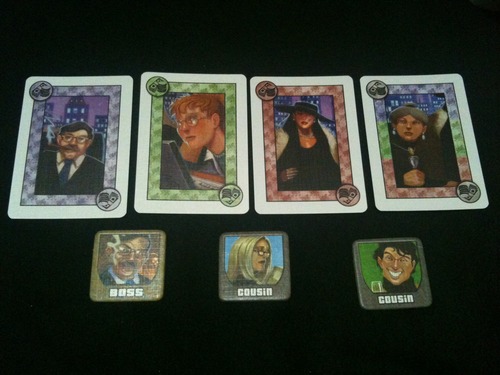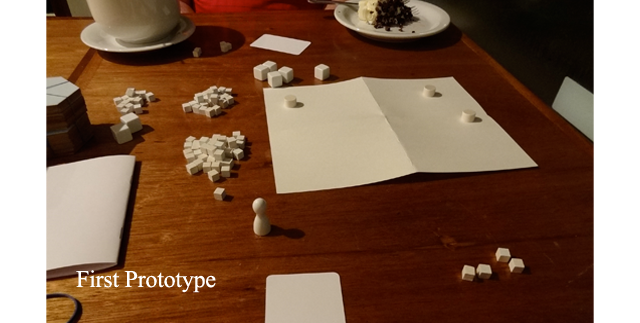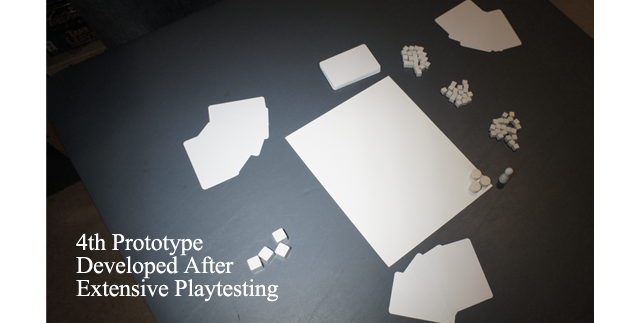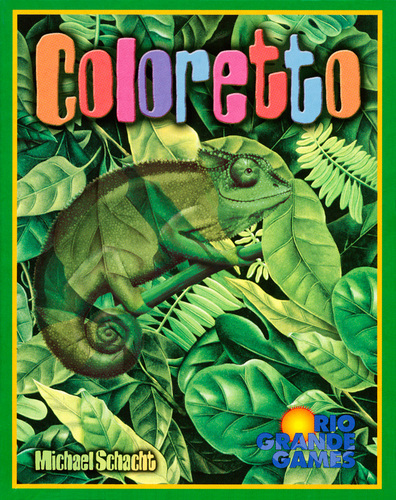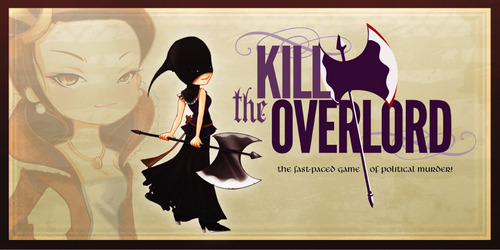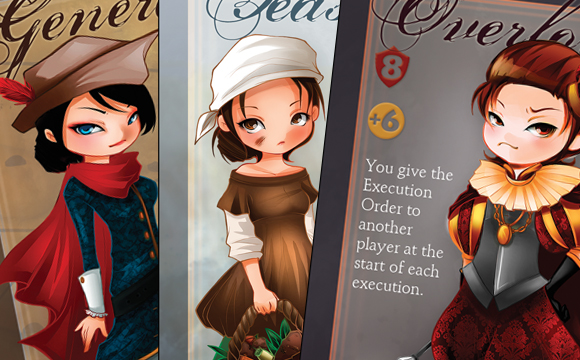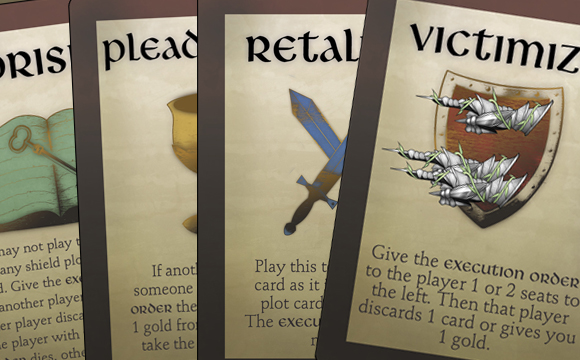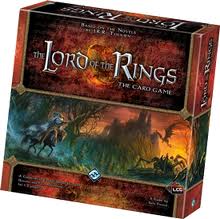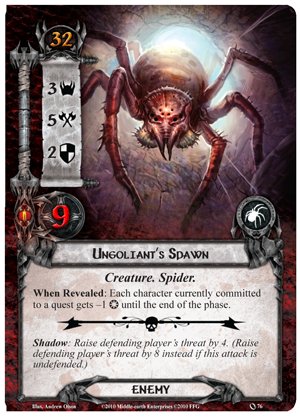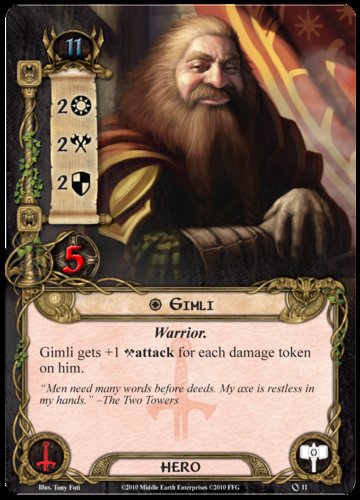Little Devils—Review
/My group loves trick-taking games—and climbing games. We regularly play Tichu, and we often play Mu and Frank's Zoo and Sticheln (my personal favorite). So where does Little Devils fall in that group? Let's find out.
Components
- 54 cards, numbered 1 through 54. Each card also has a number of devils on it—from zero to five.
- Rules
That's it—but it all comes in a nice, embossed tin case that will stand up much better than the flimsy boxes most card games come in.
Setup
The game plays 3-6 players, and you'll remove certain numbers of the cards depending on how many are playing. Then you'll deal out nine to each player.
Gameplay
The player to the left of the dealer leads any card he or she wants—except a card with five devils on it (unless that's all that person has). Unlike most trick-taking games, the next person can play any card he or she wants, and chooses the direction of the hand. If the second player chooses a card numbered higher than the first one played, then the highest card played to the hand will win the trick. If the second player chooses a card numbered lower than the first one played, then the lowest card played to the hand wins the trick. It will happen that someone doesn't have a card that can go in the direction of the trick, and that person is forced to play in the opposite direction. Well that turns the hand topsy-turvy: the person who leads the highest or lowest card in the opposite direction wins. That seems way more complicated than it is in real life, so how about a couple examples...
Example 1
Player 1—Leads a 31
Player 2—Plays a 40, so the direction is higher and the highest played card wins the trick.
Player 3—Plays a 32
Player 4—Plays a 54, and takes the trick
Example 2
Player 1—Leads a 52
Player 2—Plays a 53, so the direction is higher and the highest played card wins the trick—but there are only 54 cards...
Player 3—Doesn't have anything higher, so is forced to play lower than 52; she plays a 40, reversing the direction of the trick, and will currently take the trick.
Player 4—Only has cards lower than 40, so plays a 35. He has played the lowest card and takes the trick.
The player who wins the trick leads the next one, and since the person who leads will never win the trick, you'll never win two tricks in a row? But don't I want to win tricks?, you ask. No, you don't.
As I said, cards have little devils on them—from zero to five—and you're trying to avoid them. Once you finish a hand, everyone counts up devils, writes it down, and you deal out a new hand. Once someone(s) reach 100 points, the game ends, and the player with the fewest points wins.
Recommendations
Family game? Yes with a but! You should decide if a game with cartooney devils on it is something you want to play. But as far as game weight and luck level, this is a great family game.
Youth group game? Maybe! Again, this will depend on your group. But I could see playing this game as a great introduction to a discussion of demons and the Enemy. You can talk about how the game seems to trivialize and minimize the idea of devils by making them cartooney, but how deadly serious evil in the world is.
Gamers Game? Maybe but probably not! Unless your group really doesn't mind a lot of luck with their games, this one might just frustrate them. But it's an okay filler, and portable.
The Verdict
This game is a very simple member of the trick-taking family of games. And that's okay! When I was a kid, my parents used to play a Euchre variant called Pepper, and I'd bug and bug them to explain it to me. And every time they'd try, my eyes would glaze over. I wish I'd had a game like Little Devils to teach me the basics of playing a card, and winning a trick, but in an easy-to-understand format.
Is this going to make it to many of my regular game nights? No, there's just too much luck. But I'll likely be using Little Devils to teach my kids the basics of trick-taking.
We played at my game group, and everyone agreed that it was just too lucky. If you have a crappy hand, welcome to Pointsville—Population: You. I like games where I can take a crappy hand and play it well and cleverly. But I will say that despite the randomness there was a great deal of laughing and groaning and just plain fun! Sometimes luck and randomness can lead to lots of fun.
I do like that you know exactly which cards are out there and could be played. If, during setup, you just took a random 20 out of the deck and put them aside unseen, this would be a much worse game for it.
One big advantage this has is that it plays more quickly than other trick-taking games. You can't really play Sticheln or Mu as a quick filler. But while it's faster than other trick-takers, this still plays on the high end of the "20-30 minutes" advertised on the tin—sometimes longer.
Something we should mention is the theme of devils. The depictions of the devils are cartoonish and "light"—and you're trying to avoid them during the game. But you're still playing a game with devils on it. It doesn't make me uncomfortable, but it does mean I'll be very intentional about when I bring this out with my kids. I want to make sure we can fully discuss devils and demons and just open a dialogue on it. Use your judgment on it.
The Final Verdict
If the only trick-taking game you've played is Hearts on the computer, or Spades in college years ago, this is a new and unique spin on the genre. It's not deep. It's not complex. It's not NOT filled with luck. But it is fun, and a great way to introduce trick-taking mechanics to young'uns. It scales well, and can be had for $15. All-in-all, it's a good family, group, and gathering game.
Thanks for reading!
